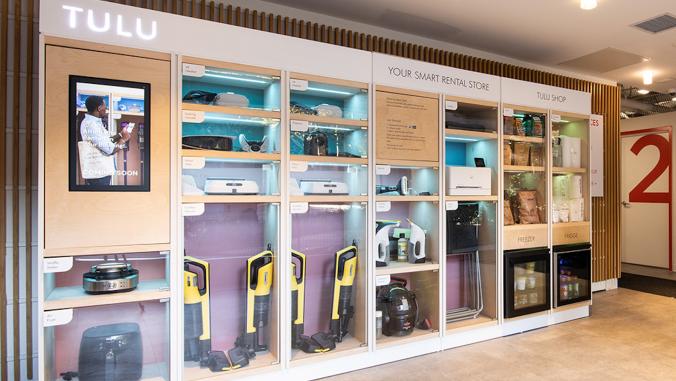Efforts to address two circular economy principles — eliminating waste and pollution, and circulating products and materials at their highest value — are popping up in every industry. This makes sense; as I mentioned recently, businesses have within their power a multitude of levers to pull to reduce waste and keep their products and packaging recirculating.
The third principle, regenerating nature, is something some corporations are just starting to explore integrating into their operations. However, for other businesses, regenerating nature sits at the very core of their operations.
Blue Dot Sea Farms, a shellfish and seaweed farm in Puget Sound in Washington state, doesn’t intend to solve global problems. At 5 acres, any of its own regenerative impacts will clearly be local. But in the transition to a circular economy, small businesses and local solutions will be the backbone for lasting systems change.
Threats below the surface
Among estuaries — partially enclosed bodies of water where freshwater from the local watershed meets saltwater from the ocean — Puget Sound is the largest by water volume in the U.S. Multiple global threats to aquatic ecosystems are showing up here, including human-induced ocean acidification and eutrophication.
As the atmospheric concentration of carbon dioxide grows, so too does its concentration in the ocean. When dissolved CO2 combines with seawater, it creates carbonic acid, increasing the acidity of water, dissolving the calcium carbonate shells and skeletons of animals such as crabs, oysters and corals, and ultimately threatening the full marine food web.
Blue Dot Sea Farms launched in 2016 as Washington state's first and only commercial seaweed farm.
Separately, eutrophication — excessive nutrients from farming runoff, sewage and industrial waste — is disrupting aquatic ecosystems. Nutrient overload leads to algal blooms, which can create "dead zones," low-oxygen areas unable to support marine life.
Natural solutions
Puget Sound is especially vulnerable to acidification and eutrophication. Still, its cold, clear waters offer ideal habitat for species including kelp and oysters. The clarity of the water allows for high levels of light, essential for kelp to thrive, and its tidal currents transport a steady supply of microalgae for oysters. Both species are particularly important to their ecosystems because of the regenerative benefits they provide.
Kelp, large brown algae, provides food and habitat for fish, and it improves water quality by removing excess carbon and nitrogen. In fact, sea farmers and scientists in Washington developed the state’s first kelp aquaculture projects to specifically explore how it may mitigate the effects of acidification in Puget Sound.
Oysters, clams and other types of shellfish are filter feeders; they pump water through their gills, consuming plankton and algae. One oyster can filter more than 50 gallons of seawater per day. As part of this process, oysters also filter nitrogen and phosphorus from the water, using these nutrients to support the growth of their tissue and shells. By doing so, oysters help reduce risk of algal blooms and oxygen depletion.
Promise in the Pacific Northwest
Recognizing the economic and environmental potential of these species, Blue Dot Sea Farms launched in 2016 as Washington state's first and only commercial seaweed farm. Its team also engages in collaborative research projects with the National Oceanic and Atmospheric Administration, the University of Washington and others to assess impacts of seaweed aquaculture on the ecosystem, to explore end markets for seaweed, and to support the development of a national marine agronomy strategy.
Both their farmed kelp and oysters are input-free, requiring no feed or fertilizers, as opposed to land-based crops or livestock that require some combination of synthetic or organic feed, water and fertilizer. Excess nutrients (often considered waste in other contexts) can support aquaculture production, essentially recycling "waste" and establishing a mutually beneficial relationship.
The journey to regenerate nature and achieve a circular economy will require an upswell of local solutions on land and at sea.
The operations of Blue Dot Sea Farms have clear environmental benefits, but the economic viability of the farm depends on robust end markets for both oysters and kelp. While the oysters have a clear market in direct sales to restaurants, the end uses of kelp are just beginning to emerge, with enormous unrealized potential.
Starting in 2017, Blue Dot Sea Farms started bringing the harvested kelp, loaded with nutrients, to a separate, local farm and applying it to pasture, returning carbon and other important nutrients back to the soil. Applying seaweed to farms to nourish soil is one circular application, but the team is also committed to building a demand-driven market for kelp, exploring a variety of applications including a recently launched line of kelp puff snacks. They hope that bolstering demand for kelp while continuing to produce high quality shellfish will ensure the farm can continue operating for years to come.
Although ocean acidification and eutrophication are global challenges, the journey to regenerate nature and achieve a circular economy will require an upswell of local solutions on land and at sea. What local, regenerative solutions are cropping up in your community?
[Interested in learning more about the circular economy? Subscribe to our free Circularity Weekly newsletter.]






